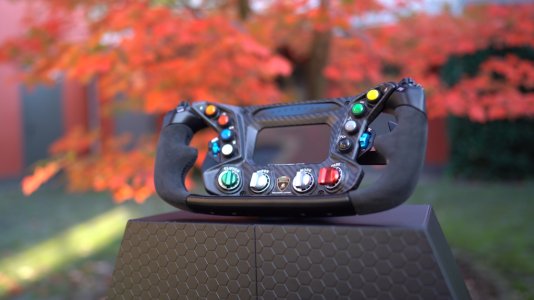Please show me that sort of behavior with the F301 or F309 in AMS or any rFactor/ISI physics engine as well as the iRacing engine.
A few things to notice:
- adding throttle while already in an oversteer condition doesn't result in sudden massive wheelspin and revs shooting to redline
- slides are held, it's not so on/off, it's not so "snap opposite lock, then snap back to centre"
- look how big the oversteer angles are, look how much opposite lock he gives with the car still being in control
- while slides are in progress, the vehicle never reacts jerky, "digital," "mass-less" or anything like that. Apart from seeing the driver's hands working, the vehicle itself changes state of grip/no-grip and oversteer-angle very smoothly.
- the vehicle always carries on with it's natural arc around the corner. Even when the rear comes out, the front tyres may be pointed to the inside of the track but the vehicle still continues moving towards the outside of the track almost as if there never even was any oversteer to begin with
- there are some very small, subtle oversteer moments in the video (0:20, 0:27, 0:46, 0:53) that may not look like much at first but notice in these videos that when the small power-exit-oversteer occurs, the driver can still keep the throttle planted and the tyres don't instantly spin up to redline. Instead, the oversteer goes away on it's own from the driver's small steering correction in combination with the tyres "clawing" at the track even while they're spinning. If you do this behavior in ISI engine, you'll just make the oversteer and wheelspin much worse and will need to do a fast snap-lift of the throttle because of the "when rear slip occurs, it's as if the tyres/vehicle is floating in the air rather than still in contact with the ground" phenomenon in the ISI engine (as well as some other sim engines). This is fantastically done well in Netkar Pro (and pretty good in LFS too) where it behaves in complete opposite to the ISI engine and almost identically to the video - you can get some small oversteer but you're able to keep the throttle pinned down (or mostly pinned down) and the tyres naturally claw and re-grip the track rather than the rear tyres lighting up as if you have 2000 Hp. I can get all sorts of these little slides in NKP and LFS. It's brilliant and feels scarily realistic.
During wheelspin in real life, it's as if tyres want to re-grip the track. Think of a bunch of claws or hooks sticking out of the tyre. While it's spinning, these claws or hooks keep trying to dig in and grab the track and that's why you get a sense of grip even when grip is lost. In the ISI engine, it's the opposite, when there is slip angle, it's as if the tyre doesn't try to claw or hook it's way back into the track but rather keep sliding as if the tyre got suddenly lifted off the ground or as if the ground suddenly lost a massive amount of coefficient of friction (eg. tarmac suddenly turned into glass or ice).
In the ISI engine, throttle applications during wheelspin usually result in wheelspin and revs massively spiking like crazy unlike real life where different throttle amounts will only raise the revs and wheelspin slightly which can be counteracted by the driver adding more opposite lock. Often, a quick & steady stab of throttle doesn't even make the wheelspin worse but instead keeps the revs stable and helps stabilize the rear (video 2 is a good example of this).
This behavior is repeatable in other vehicles from Formula Trucks to karts to Formula 1s.










